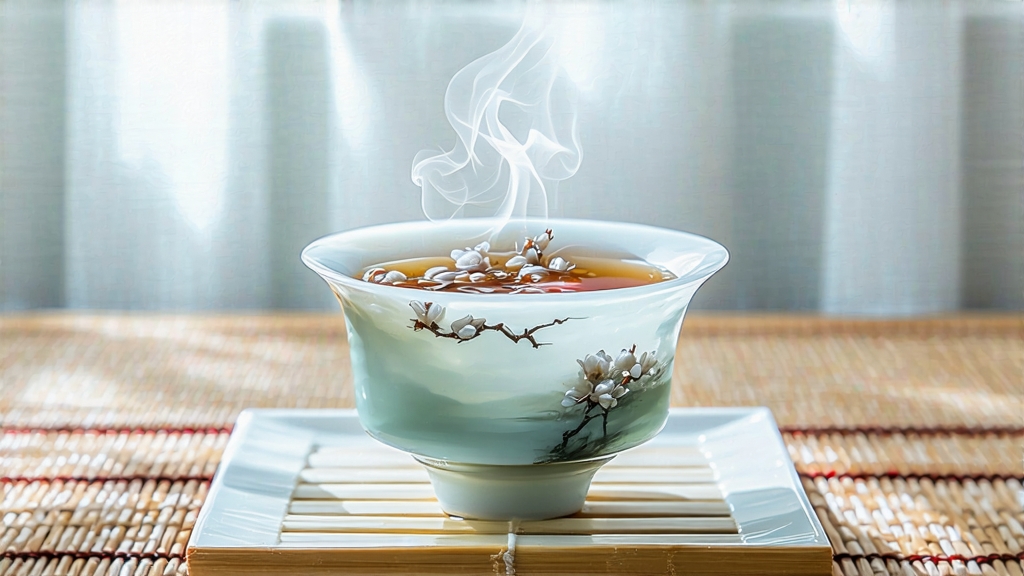
Tucked into the northeastern corner of Fujian province, where the Wuyi Mountains exhale cool mist over terraced fields of white camellia, Bai Hao Yin Zhen—“Silver Needle”—has for three centuries been the whispered secret of Chinese tea connoisseurs. Unlike its darker cousins of the tea world, this princely white tea asks for nothing more than time, air, and the deft hands of farmers who still mark the lunar calendar in red ink. To international drinkers accustomed to the smoky drama of lapsang or the rolling thunder of pu-erh, Yin Zhen offers a quieter revelation: the taste of early spring distilled into down-covered buds that look like moonlit slivers of ivory.
History: From Imperial Tribute to Global Muse
The first written record appears in 1796, when the Jiaqing Emperor accepted “white down needles” as county tribute from Fuding. Court physicians praised the tea for its cooling nature, prescribing it to dowager empresses suffering from late-summer fever. Export began in the late 19th century via tea clippers bound for San Francisco and London, yet quantities remained so small that foreign catalogues labeled it “Chinese Elf Tea,” half myth, half luxury. Only after 2003, when the Chinese government granted white teas geographic-indication status, did serious production expand beyond state farms. Today, boutique gardens in Fuding and neighboring Zhenghe still refuse mechanical harvesting; they insist that only fingers trained since childhood can pluck the perfect “single bud” standard without bruising the fragile trichomes that store sweetness.
Terroir: Where Ocean Clouds Meet Granite Earth
The Taimu mountain range rises like a green wall against the East China Sea, capturing maritime fog that lingers until noon. This daily mist lowers sunlight intensity, forcing the tea bush to synthesize more theanine and fewer bitter catechins. Soils are fluvial granite, porous and slightly acidic, draining the relentless subtropical rains yet retaining just enough moisture for the shallow-rooted Da Bai cultivar. Night temperatures can drop ten degrees Celsius, a diurnal swing that condenses amino acids into the buds, gifting Yin Zhen its hallmark broth viscosity—what Chinese tasters call “the swallow of silk.”
Plucking: One Dawn, One Standard
The harvest window opens on the first warm day after Qingming, usually between March 15 and April 10. Workers rise at 4 a.m. to meet the mountain before sunrise; buds plucked before dawn carry higher moisture but lower enzymatic activity, a paradox that later translates into fresher aroma. The strict law is “no leaf, no second bud.” Each pluck must be a single fat embryo sheathed in silvery hair, 2.5–3 cm long, snapping off with a barely audible pop. Experienced pickers fill only a shallow bamboo basket, never a plastic bag, to prevent bruising and condensation. By 9 a.m. the mountain is already too warm; plucking stops, and the day’s harvest—often no more than two kilograms of fresh buds—is carried downhill on shoulder poles, the bamboo swaying like a metronome to keep the buds intact.
Withering: The Art of Doing Nothing
Unlike green tea that is pan-fired to kill enzymes, white tea is coaxed into revealing itself through controlled dehydration. Traditions split into outdoor and indoor phases. First, the buds are laid on water-reed trays set upon waist-high bamboo racks in a shaded courtyard. There they rest for 26–32 hours, depending on humidity, while tea masters read the wind by lifting a handful to their cheek. When the bud’s spine feels leathery yet the tip still springs back, the tea is moved indoors to a second-story loft whose windows are screened by hemp cloth. Here the final moisture drops from 70 % to below 11 % without ever exposing the tea to direct sunshine, preserving the silvery down that gives Yin Zhen its name. No machine can replicate the micro-adjustments: a window cracked at 2 a.m. when mountain dew rises, a charcoal brazier lit at dawn to raise the loft temperature by a single degree Celsius.
Charcoal Baking: A Whisper of Smoke
Some makers finish the tea with a 20-minute bake over low-temperature pine charcoal, a step borrowed from neighboring Wuyi rock oolongs but executed far more gently. Temperatures stay below 45 °C; the goal is not to flavor but to stabilize, driving residual moisture from the bud’s core